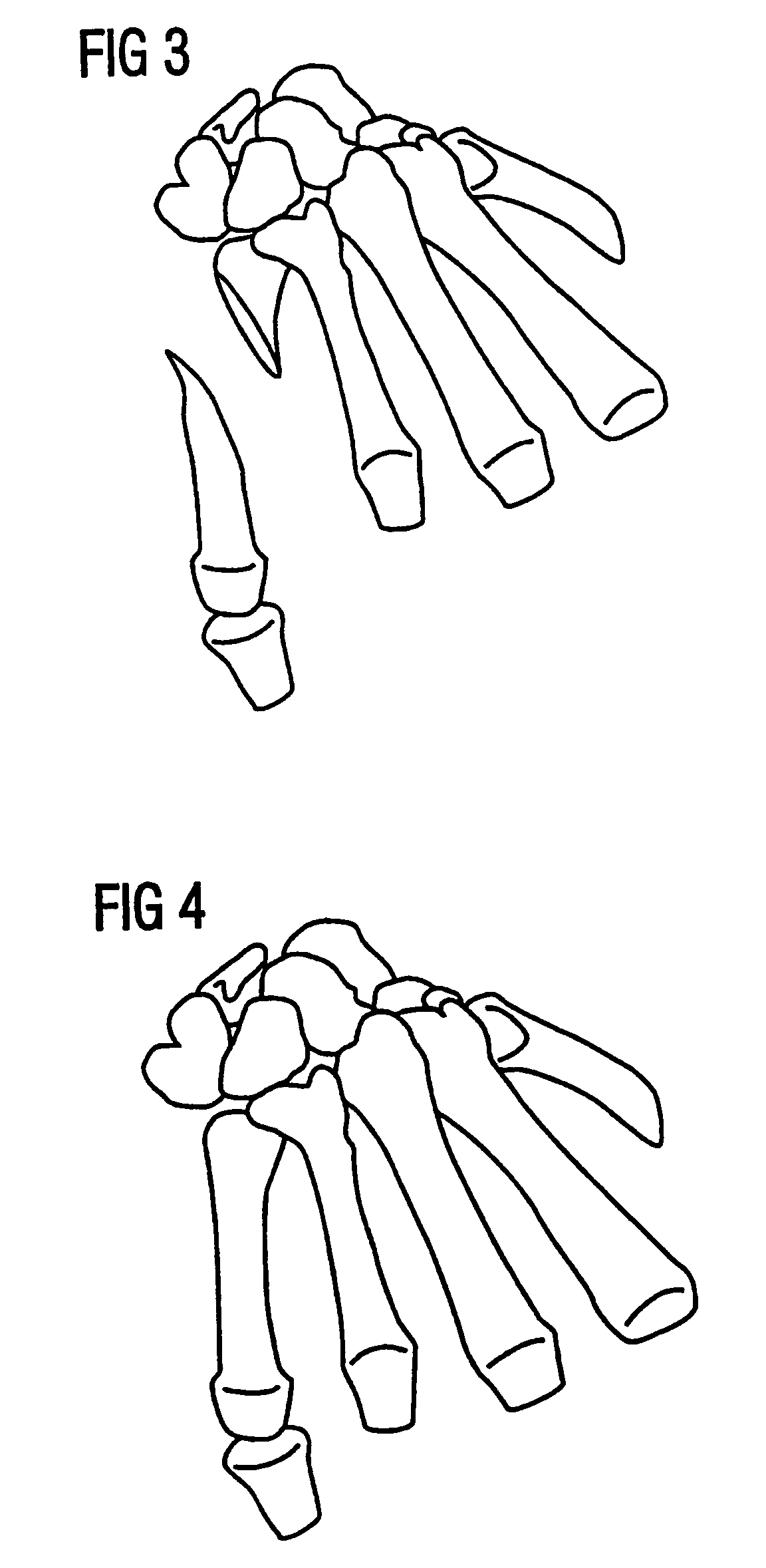Method, device and software for separating the individual subjects of an anatomical structure segmented from 3D datasets of medical examination procedures
a three-dimensional character and anatomical structure technology, applied in the field of medical image processing of three-dimensional character datasets, can solve the problems of insufficient merely conveying a spatial impression of the displayed body region to the medical practitioner, insufficient form of presentation of examination results, and inability to achieve the effect of preparing for an intervention to treat a complex multiple fractur
- Summary
- Abstract
- Description
- Claims
- Application Information
AI Technical Summary
Benefits of technology
Problems solved by technology
Method used
Image
Examples
Embodiment Construction
[0017]FIG. 1 provides a conceptualization of the graphic representation of a computer-tomographic 3D dataset as is currently available to a surgeon. In practice, the data are visualized by means of a method referred to as volume rendering, wherein the surface of the identified osseous structure is presented with a suitably calculated distribution of light and shadow so that it conveys a plastic impression of the underlying spatial structure to the viewer or the surgeon.
[0018]A bone fracture with a dislocated fragment of the os metacarpal V can be clearly recognized in the left half of FIG. 1. The relative position of this bone fragment with respect to the other subjects of the graphically visualized structure cannot be modified at this initial stage S0 of the inventive method since the structure for a single, interconnected subject in this stage as established by the standard methods of medical image processing. Although a viewer has the possibility of examining details such as, for...
PUM
 Login to View More
Login to View More Abstract
Description
Claims
Application Information
 Login to View More
Login to View More - R&D
- Intellectual Property
- Life Sciences
- Materials
- Tech Scout
- Unparalleled Data Quality
- Higher Quality Content
- 60% Fewer Hallucinations
Browse by: Latest US Patents, China's latest patents, Technical Efficacy Thesaurus, Application Domain, Technology Topic, Popular Technical Reports.
© 2025 PatSnap. All rights reserved.Legal|Privacy policy|Modern Slavery Act Transparency Statement|Sitemap|About US| Contact US: help@patsnap.com



